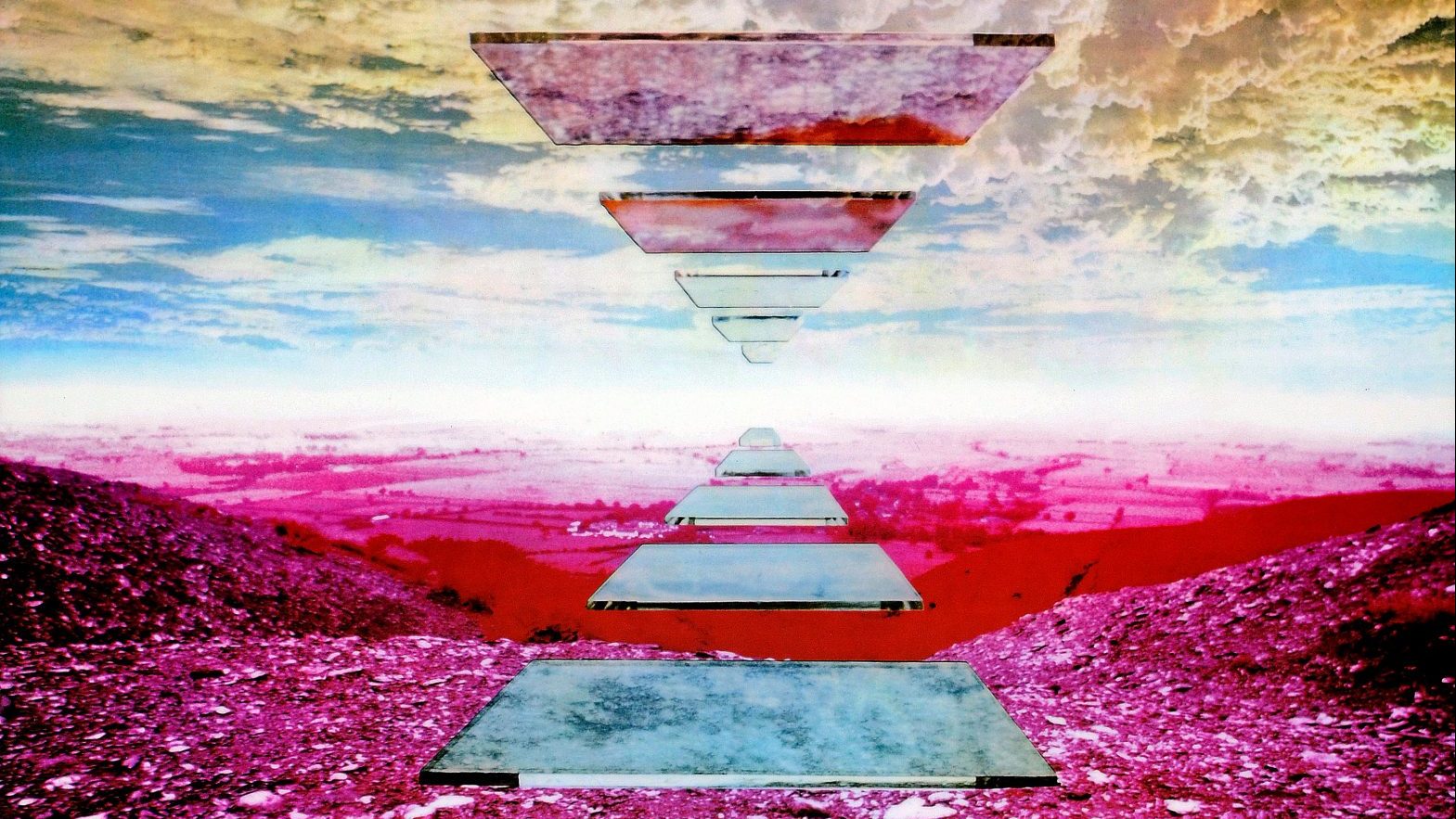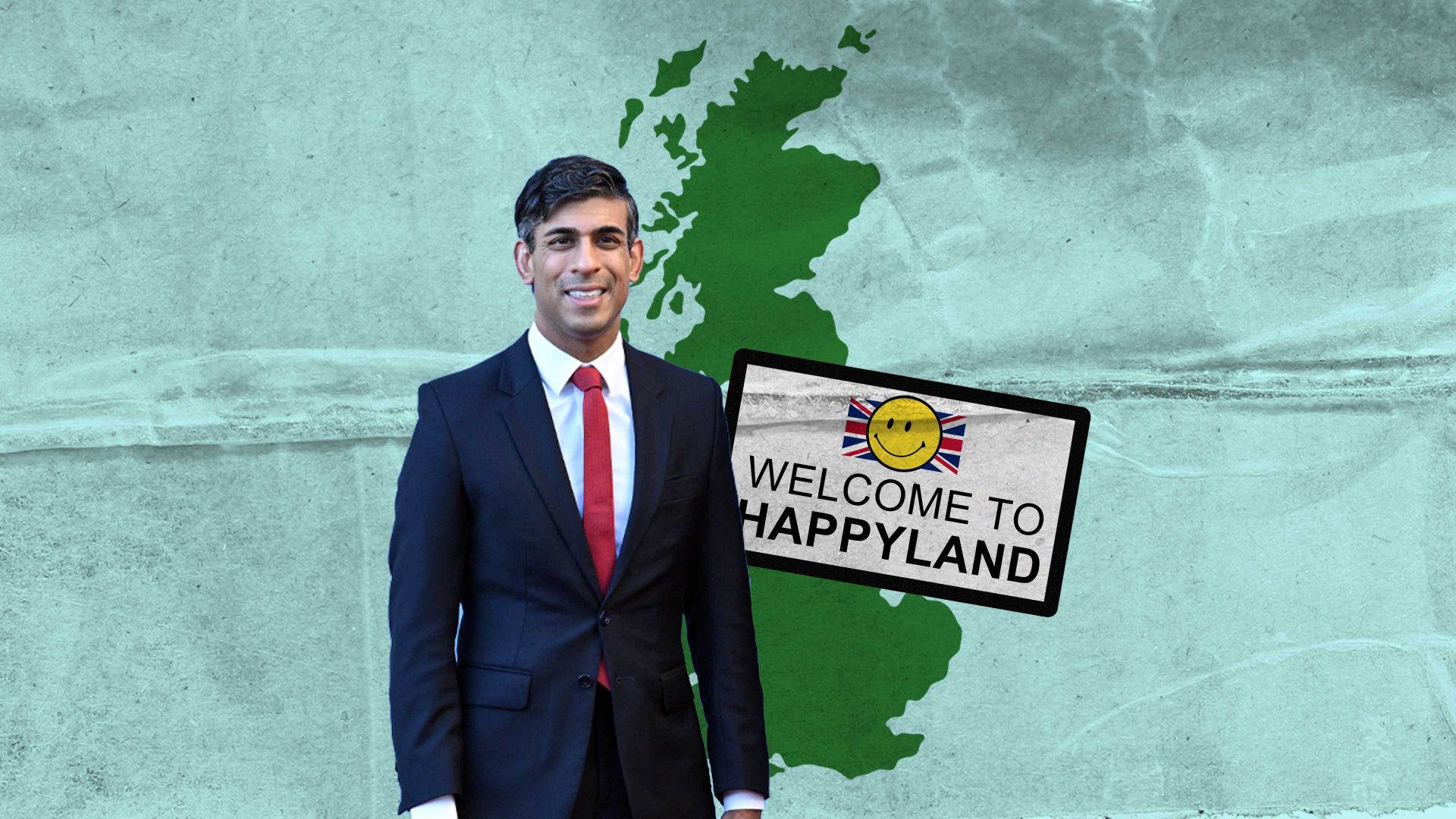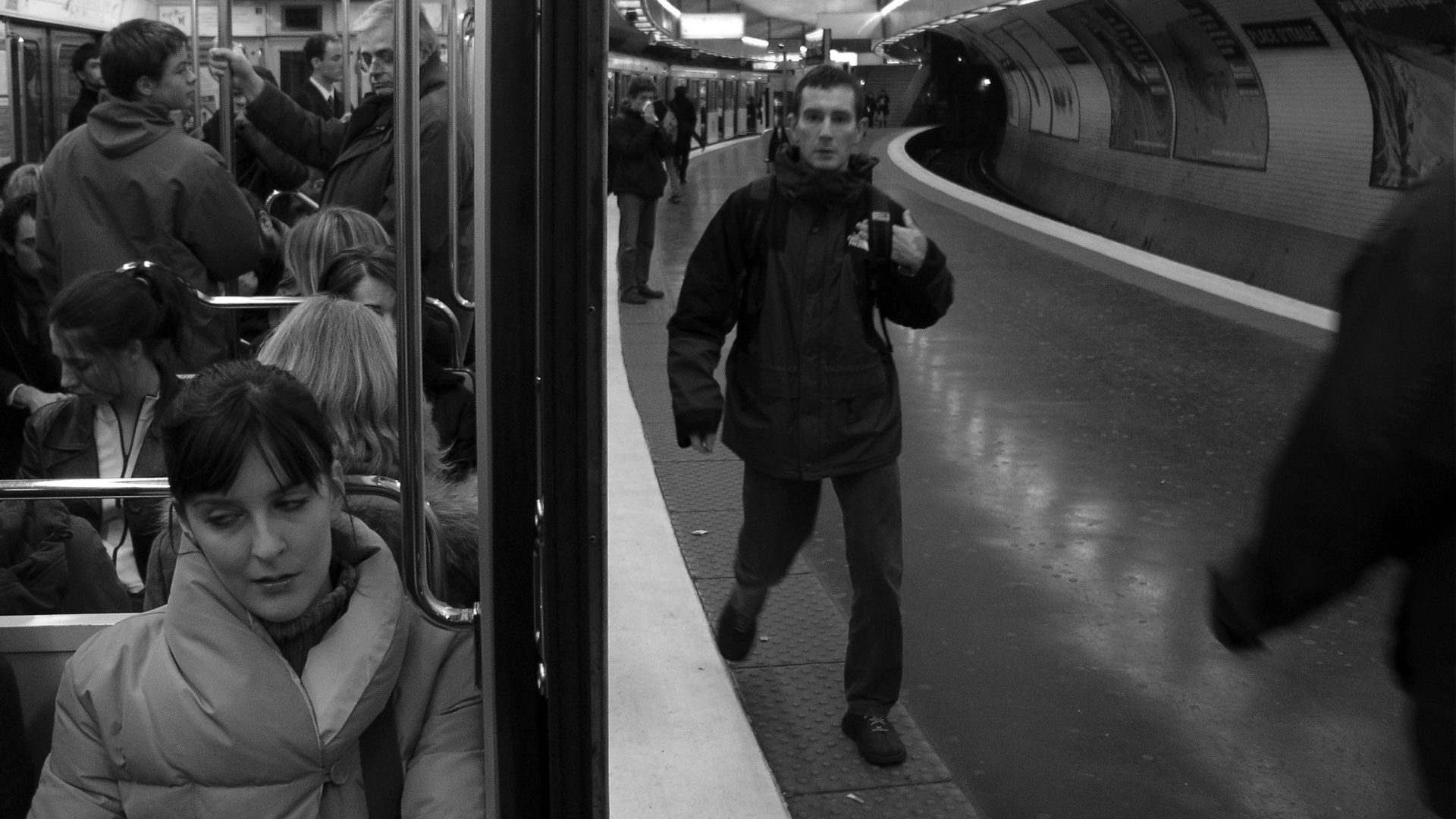Late autumn 1973: a listed English manor house deep in the Oxfordshire countryside. A trio of unassuming, long-haired German musicians are hunched over banks of keyboards and wires, creating the sound of the future.
Tangerine Dream are recording their breakthrough album Phaedra, the first to feature their now-classic sequencer-driven sound. Their early German recordings, largely ignored at home, had earned them a cult British following and a champion in DJ John Peel. Enter Richard Branson, who offered them a five-year deal. His fledgling Virgin Records had recently scored its first major success with Mike Oldfield’s Tubular Bells, also recorded in the Manor Studio in Shipton-on-Cherwell.
Phaedra – a title drawn from Greek mythology – proved a milestone in electronic and ambient music. Released in February 1974, it brought unexpected chart success and gold status in the UK. Rolling Stone described it as “challenging, otherworldly and almost indescribably beautiful”.
For their founder, Edgar Froese, it was another step in a lifelong quest for new musical ideas. Described by those who knew him best as an explorer, Froese forged a revolutionary new form of sound known as kosmische musik (cosmic music), lazily dubbed “Krautrock” by British DJs.
Quickly abandoning early forays into rock’n’roll, Froese instead drew on psychedelia, classical music and the avant-garde musique concrète experiments of Karlheinz Stockhausen and Pierre Schaeffer. There he found that the strict distinction between tone and sound had disappeared.
With societal revolution in the air, the tools offered by the inventions of Robert Moog offered fresh possibilities to create new sounds and build material around pulsating, trancelike ambient rhythms using synthesisers, abandoning the typical song structure found in British and American rock and pop.
Froese would continue to push musical boundaries with a shifting line-up across 100 albums with Tangerine Dream from its inception in Berlin in the late 1960s until his death in 2015. The band’s legacy continues under the careful guardianship of Froese’s widow, the band’s manager and artist Bianca Froese-Acquaye, and his protege Thorsten Quaeschning, who joined in 2003 and was appointed heir apparent by his mentor. The current line-up embarks on an extensive tour this autumn.
In a wide-ranging new interview, Froese-Acquaye reveals the creative forces that propelled her husband: “Edgar was first and foremost a seeker and at the same time a driven man. Finding new, different sounds meant for him fulfilment of his perpetual longing for a new space in which he felt comfortable and could withdraw.
“Many considered him courageous and always open to new ways of creating sounds, new technologies, but for Edgar, this was only normal and natural. His motivation for constant research was the joy of creativity, but also the fulfilment of a longing that had existed since childhood, to leave this normal, often banal, pain-producing bipolar world, at least to find a new kind of atmosphere, filled with so-called cosmic sounds, to forget everyday life. In principle, music functioned like a kind of light drug, it catapulted one into other dreamlike spheres, but without side-effects.”
Growing up feeling incarcerated in the walled city of West Berlin had a major bearing on Froese and other creatives. A movement, later dubbed the Berlin School, put down roots at the Zodiac Free Arts Lab, described by Froese as an anarchic joint where they played randomly with sound. Where the impossible was the only idea worth discussing.
“Berlin was a unique, isolated cosmos from which many still unknown things could emerge and grow,” says Froese-Acquaye. “In this city, everything was possible. Because of the confined situation surrounded by enemy territory, one was given the power, rather unconsciously, to break boundaries, to try out new things, to set trends. Especially the 1960s, 70s, the postwar years, put people and especially creative people in a mood of departure and animated them to think freely.
“Edgar was a child of his time and he suffered enormously from the stuffiness of his parents’ and grandparents’ generation and had to clearly distinguish himself with how he was, how he thought, what he was interested in and how he acted. Edgar never belonged to the mainstream. Even as a child and teenager he was rather isolated, and inevitably had to distance himself musically from the mainstream.”
Initially, Froese expressed himself through sculpture and fine arts, but found something more intangible through music. Attracted by the growing psychedelic movement, he embraced the freedom to write whatever he was feeling without the burden of rules or limitations. He realised that drugs provided only a “temporary alteration of the mind” and quickly became a vegetarian, giving up coffee and alcohol.
While early forays at the Zodiac were not electronic, Froese was already dreaming of the possibilities opening up through technology to create artificial sounds, an intermodulation of frequencies.
An invitation to play for the great surrealist artist Salvador Dalí at his famous garden parties was a formative experience and opened his eyes to the true nature of music. In Dalí’s villa, it was as if someone had stopped time. There, he realised that to open up the “gates of perception” he would need to change his approach rather than relying on structured sounds.
Froese-Acquaye says the encounter with Dalí was deeply significant: “Walking with him in his olive grove in Cadaqués, Dalí told Edgar about his fascination with dreams, which for him reflected the unconscious. He processed these dreams to a high degree of perfection in his famous paintings. As a young man Edgar read a lot of Freud and CG Jung, among others, and knew exactly what Dalí was talking about. The intense conversation with Dalí about the surreal, the dreamlike, triggered Edgar to use the word “dream” in his band name, for example.
“Edgar also managed to get a glimpse into Dalí’s studio, where no one else was allowed to enter. He was very taken by the atmosphere there, the smells, the colours, and Dalí’s extreme order, which did not allow any conclusions to be drawn about a chaotic, crazy artist, as Dalí was often described in his time.”
As an underground act in Berlin, Tangerine Dream’s first few years were tough, until an offer from Ohr Records to record their debut album Electronic Meditation. Creating a style took time, but over the course of a trio of albums – Alpha Centauri, Zeit and Atem – recorded at producer Dieter Dierks’ studio in Cologne, they started to make greater use of keyboards. This new style was spacey and atmospheric, some pieces improvised in the studio, irreplicable documents of moments in time.
Peter Baumann, aged just 18 when he joined for the Zeit sessions, completed the band’s classic line-up alongside Froese and Christopher Franke. While they had few gadgets in the Ohr years, for Phaedra, alongside the Mellotron, they acquired a modular Moog synthesiser with their advance from Virgin. It became their hallmark.
The sound was distinctly European, in marked contrast to the music emerging from Britain or America. The Berlin School found common cause with the Düsseldorf School, which produced the more percussive, industrial electronic sound of Can, Kraftwerk and Neu! Outside of Germany, Froese identified French pioneer Jean-Michel Jarre as his musical soulmate at the forefront of a new movement.
“It was an exciting time for Edgar,” says Froese-Acquaye. “What people don’t know or perceive was he was rather a modest, withdrawn, rather introverted guy. He wasn’t a front pig in the classical sense, in front of the audience, the way they were in rock bands. He didn’t need to put himself in the light and yet he was a leader, teacher and revolutionary in a different way.
“He had an extremely good intuition, for example, when it came to choosing his fellow musicians for the band, the right nose for business partners and concert tours, great negotiating skills and was generally a person who thought ‘big’. His credo was always: ‘The music is the star!’ Not its protagonists. He himself felt like a kind of ‘flow heater’, someone who tried to translate into music what was given to him as intuitive input.”
Noting how the UK was ahead of the continent in terms of its openness to other genres, Froese-Acquaye explains why relocating to Britain was so important. “It was important for the band to leave Germany, and to be recognised abroad, to in turn also receive musical recognition in Germany. Maybe you know the saying: ‘The prophet in his own country counts for nothing.’ That’s exactly how it was.
“From Edgar’s point of view, Germany was a musical wasteland in the 1960s and 70s. At TD’s first concerts, the band was still pelted with vegetables and rotten eggs. In Germany, there was either only classical music, Schlager or folk music and, at best, music imports from America or the UK.”
Ecclesiastical buildings provided stunning backdrops for several legendary performances in the mid-1970s. They performed at Reims Cathedral in December 1974 for 6,000 people, the sound reverberating around the vast High Gothic building, lit only by a few lamps in the ceiling. While the Vatican prohibited future appearances in Catholic spaces, they were welcomed by the Anglican church and played landmark shows in Coventry Cathedral and York Minster, audiences listening in respectful reverence.
Tangerine Dream played initially with their backs to the audience, surrounded by banks of equipment. They chose to improvise rather than attempt to recreate their studio recordings, so each performance was unique. These live compositions, available on the Cherry Red label, provide a parallel discography. Says Froese-Acquaye: “Edgar once jokingly said: ‘we are the best-paid practice band in the world!’ Because they felt every concert more like a rehearsal.”
Tangerine Dream enjoyed their biggest chart success with Rubycon in 1975. It further developed the sequencer-driven sound, while 1976’s Stratosfear marked the beginning of a development towards a more melodic and compositional style.
This striking new sound proved increasingly attractive to Hollywood directors seeking to add futuristic textures, tones and moods to movie soundtracks. In 1977, Tangerine Dream provided the acclaimed score for William Friedkin’s Sorcerer, and recorded original music for more than 20 films over the next decade.
Wider change was in the air. Baumann left in 1977, with Johannes Schmoelling joining in time for the band’s historic performance at the Palace of the Republic in East Berlin in January 1980, the first western “rock” band to perform in the German Democratic Republic.
The 1980s heralded the rise of digital technology. For Froese, a blessing and a curse. Nothing they had played live before was fully reproducible. With digital technology, he felt they lost that charm of irregularity in sound. The status of exclusivity in the genre of electronic music was gradually lost, although Tangerine Dream always stood out from the crowd.
The band fractured further with the departure of both Schmoelling and Franke. Gradually, a younger generation of musicians provided new foils for Froese.
From 2003 Quaeschning gained an intriguing insight into Froese’s working practices. Over the next decade, he spent six months each year writing and recording at Froese’s studios in Austria. He found a man still eager to learn, with clear visions for his work. Possibly more important than learning about music from a maestro was the life advice Froese passed on as they talked late into the night.
“The first thing if you live together with Edgar, you learn you have to work hard,” remembers Quaeschning. “He was working every day. There was nothing special if you got a Dropbox invitation with a new track on December 24!
“He was such an interesting person. He met so many people and was one of the most well-read people I ever met. He was an unbelievably good teacher and a prototype of a boss. Sometimes the problem was he had too many ideas a week. There were not many people around him. It was Bianca and me most of the time. Our job was sometimes to filter the number of ideas.”
Froese had prepared for the future. He wanted Quaeschning, who had adopted a musical director role, to continue Tangerine Dream’s legacy. He left behind his full archive with a wealth of sketches and nearly full arrangements for the group to develop. There is potential for a further 30 albums containing input from the band’s founder, beginning with 2017’s critically acclaimed Quantum Key.
Working so closely together means Quaeschning is well-placed to navigate Froese’s often disorganised filing system. Exciting new programmes such as Melodyne offer new opportunities to work with even the most sophisticated polyphonic material and incorporate it into new compositions.
Last year’s Raum featured real-time compositions combined with classic studio productions; sequencer-driven, haunting soundscapes alternated with anthemic warm synthesisers. Tangerine Dream performed it to an ecstatic reception on their 2022 tour including a return to Coventry Cathedral, performances captured on a recent comprehensive box set.
The current line-up continues to draw strength and inspiration from Tangerine Dream’s musical heritage. Quaeschning is happy to carry the mantle: “Edgar was my master, my boss, my teacher. He said: ‘this is the concept’. I thought, yes, I will do this. I’m taking it very seriously. I’ve never done something as long as this. So I give it my best because this is my life.”



